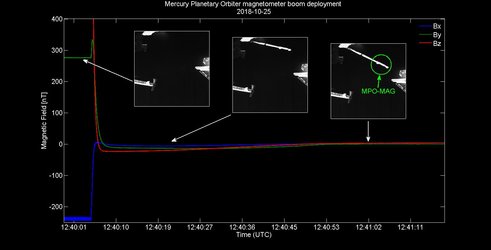Accept all cookies Accept only essential cookies See our Cookie Notice

About ESA
The European Space Agency (ESA) is Europe’s gateway to space. Its mission is to shape the development of Europe’s space capability and ensure that investment in space continues to deliver benefits to the citizens of Europe and the world.
Highlights
ESA - United space in Europe
This is ESA ESA facts Member States & Cooperating States Funding Director General Top management For Member State Delegations European vision European Space Policy ESA & EU Space Councils Responsibility & Sustainability Annual Report Calendar of meetings Corporate newsEstablishments & sites
ESA Headquarters ESA ESTEC ESA ESOC ESA ESRIN ESA EAC ESA ESAC Europe's Spaceport ESA ESEC ESA ECSAT Brussels Office Washington OfficeWorking with ESA
Business with ESA ESA Commercialisation Gateway Law at ESA Careers Cyber resilience at ESA IT at ESA Newsroom Partnerships Merchandising Licence Education Open Space Innovation Platform Integrity and Reporting Administrative Tribunal Health and SafetyMore about ESA
History ESA Historical Archives Exhibitions Publications Art & Culture ESA Merchandise Kids Diversity ESA Brand Centre ESA ChampionsLatest
Space in Member States
Find out more about space activities in our 23 Member States, and understand how ESA works together with their national agencies, institutions and organisations.
Science & Exploration
Exploring our Solar System and unlocking the secrets of the Universe
Go to topicAstronauts
Missions
Juice Euclid Webb Solar Orbiter BepiColombo Gaia ExoMars Cheops Exoplanet missions More missionsActivities
International Space Station Orion service module Gateway Concordia Caves & Pangaea BenefitsLatest
Space Safety
Protecting life and infrastructure on Earth and in orbit
Go to topicAsteroids
Asteroids and Planetary Defence Asteroid danger explained Flyeye telescope: asteroid detection Hera mission: asteroid deflection Near-Earth Object Coordination CentreSpace junk
About space debris Space debris by the numbers Space Environment Report In space refuelling, refurbishing and removingSafety from space
Clean Space ecodesign Zero Debris Technologies Space for Earth Supporting Sustainable DevelopmentLatest
Applications
Using space to benefit citizens and meet future challenges on Earth
Go to topicObserving the Earth
Observing the Earth Future EO Copernicus Meteorology Space for our climate Satellite missionsCommercialisation
ESA Commercialisation Gateway Open Space Innovation Platform Business Incubation ESA Space SolutionsLatest
Enabling & Support
Making space accessible and developing the technologies for the future
Go to topicBuilding missions
Space Engineering and Technology Test centre Laboratories Concurrent Design Facility Preparing for the future Shaping the Future Discovery and Preparation Advanced Concepts TeamSpace transportation
Space Transportation Ariane Vega Space Rider Future space transportation Boost! Europe's Spaceport Launches from Europe's Spaceport from 2012Latest

Solar Orbiter boom deployment and first magnetic field measurements
Thank you for liking
You have already liked this page, you can only like it once!
A video version of this animation is also available here.
Data collected with the Magnetometer (MAG) instrument during the deployment of the instrument boom of ESA's Solar Orbiter spacecraft show how the magnetic field decreases from the vicinity of the spacecraft to where the instruments are actually deployed.
Solar Orbiter was launched on 10 February 2020 from NASA’s Kennedy Space Center in Cape Canaveral, Florida. The magnetometer’s two sensors were switched off about 21 hours after liftoff, and the boom deployment took place almost three days after liftoff, on 12 February.
First measurements from MAG, received after the deployment of the high gain antenna on 13 Feburary, show the level of the magnetic field decrease by about one order of magnitude over the overall 30-minute deployment sequence. At first, the data reflected mostly the magnetic field of the spacecraft, whereas at the end of the procedure, scientists got the first glimpse of the significantly weaker magnetic field in the surrounding environment.
The data in this animated graphic show the deployment of the second boom segment, which started around 19:04 UTC. The right half of the graph shows the value of the interplanetary magnetic field.
Solar Orbiter carries a suite of 10 instruments, comprising in situ and remote-sensing ones, to observe the turbulent solar surface, the Sun’s hot outer atmosphere, and changes in the solar wind. Remote-sensing payloads will perform high-resolution imaging of the Sun's atmosphere – the corona – as well as the solar disc. In situ instruments will measure the solar wind and the solar magnetic field in the vicinity of the orbiter.
Solar Orbiter is an ESA-led mission with strong NASA participation. The prime contractor is Airbus Defence and Space in Stevenage, UK.
-
CREDIT
ESA; Spacecraft: ESA/ATG Medialab; Data: ESA/Solar Orbiter/MAG -
LICENCE
ESA Standard Licence

Magnetic field measurements during Solar Orbiter boo…

Magnetic field measurements during Solar Orbiter boo…

BepiColombo magnetometer boom measures magnetic fiel…

BepiColombo magnetometer boom deployed















 Germany
Germany
 Austria
Austria
 Belgium
Belgium
 Denmark
Denmark
 Spain
Spain
 Estonia
Estonia
 Finland
Finland
 France
France
 Greece
Greece
 Hungary
Hungary
 Ireland
Ireland
 Italy
Italy
 Luxembourg
Luxembourg
 Norway
Norway
 The Netherlands
The Netherlands
 Poland
Poland
 Portugal
Portugal
 Czechia
Czechia
 Romania
Romania
 United Kingdom
United Kingdom
 Slovenia
Slovenia
 Sweden
Sweden
 Switzerland
Switzerland

























